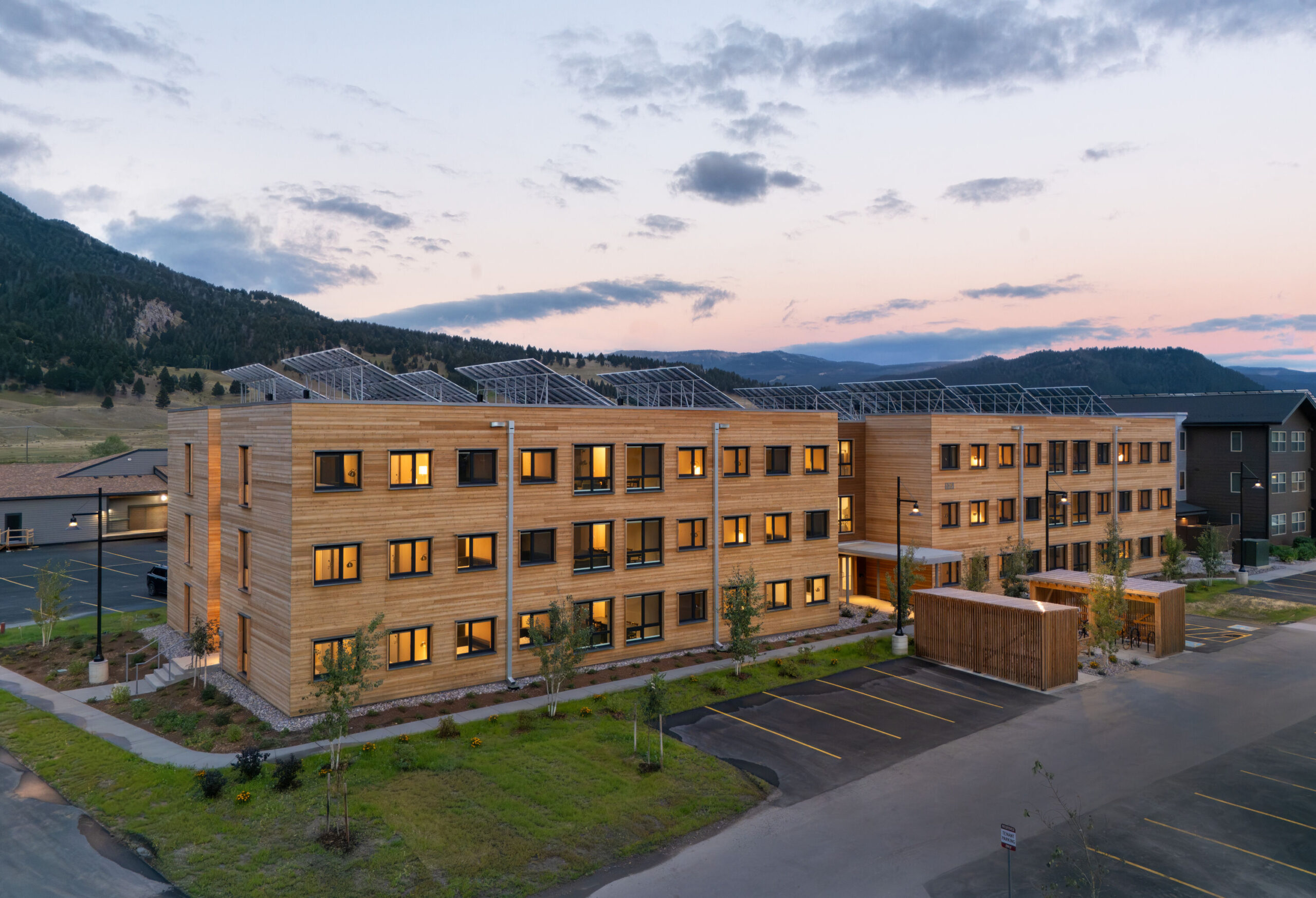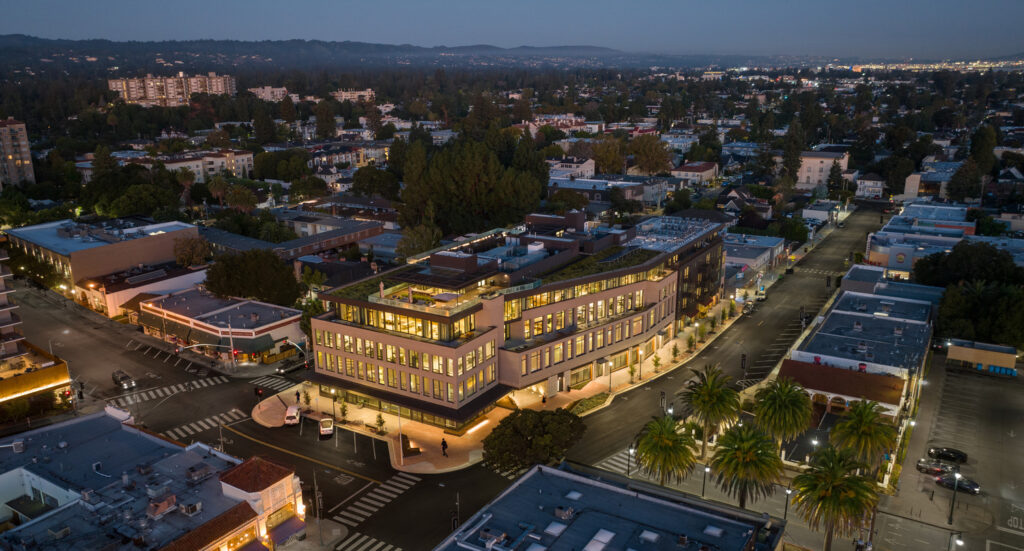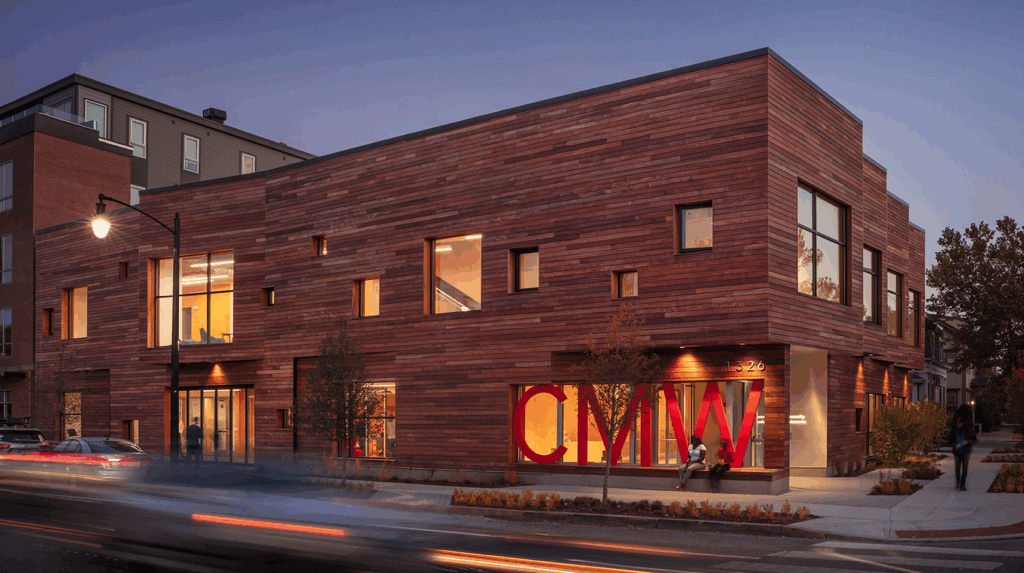Meeting those emerging demands was central to the concept of Wilson Forest Park Townhomes—a 14-home subdivision that sits at the edge of Portland, Oregon’s largest park and one of the nation’s largest urban forests. Its unique light-frame wood and mass timber design is rewriting the rules when it comes to the typical family home.
Mass Timber, Multifamily
Wilson Forest Park Townhomes
A Fresh Take: Timber-Built Townhouses Rewrite the Rules of the Typical Family Home
The conventional family home—from design and location to materials and performance—is changing. Along with wanting an affordable, warm, and welcoming space to call home, buyers are increasingly focused on how it can meet their shifting needs, from shorter commute times and work-from-home options to eco-friendly features, less yard work and maintenance, and more flexibility to accommodate intergenerational living, aging in place, and elder care.

“Cities have an affordability problem. And reasonably priced flexible housing options for families are often limited or fail to meet their changing needs, which are a lot different from their parents’ generation,” explained Noel Johnson, the Portland-based developer behind the project.
“Today’s young families are trying to pay for their kids’ education while paying off their own student loans. They’re two working parents who often have less time for yard work and maintenance. They value eco-friendly options and want more versatility that can accommodate their needs as their kids grow up or they need to take care of aging parents,” adds Johnson.

Banking On a New Kind of Buyer: Part Townhouse, Part Single Family Home
The concept for Wilson Forest Park Townhomes, which pairs the convenience of urban density with the advantages of suburban living, came out of a series of creative brainstorming sessions Johnson had with his design team, headed up by Tuan Luu, principal at Mildren Design Group (MDG) who was Architect of Record, as well as Rick Potestio of Potestio Studio who provided design collaboration.
“The design really came out of informal brainstorming sessions—more like a ‘family discussion’—and the idea germinated from talks about the merits of the rowhouse configuration, like you might imagine built in Europe or cities like New York, Boston, or Philadelphia. We thought, ‘Those are pretty awesome,’ and could offer savings through increased density, less yard work and maintenance while also giving ample space and the feel of a separate dwelling. Why don’t we build them out here?” recalls Johnson.
The project’s design fills a gap in the local market with its family-sized townhomes featuring four and five-bedroom options, ranging from 2,650 to 3,450 square feet. As three-story, near-zero-lot-line townhomes—meaning little space is left between each home and the lot line—the development maximizes its use of space and delivers practical and spacious floor plans.
Wilson Forest Park Townhomes’ architectural aesthetic takes cues from the high-density rowhouses featured prominently on the east coast. These rowhomes, situated shoulder-to-shoulder, offer the advantages of urban living with the space necessary for life outdoors and include a front stoop, generous decks, and EV-friendly double garages connected by a back alley.
Unique to this project, each home comes with a legal accessory dwelling unit (ADU) located on the ground floor that can function as separate work-from-home office, apartment, or guest quarters. The townhomes are family-focused in scale and function, where the owner can rent the ADU to offset the mortgage or have a place for guests, a nanny, or aging parents. The home adapts as life evolves.
According to Johnson, the 600-square-foot ADU would rent for about $1,700 a month, which would make owning one of the townhomes as affordable as renting a two-bedroom apartment. Along with this mortgage-helper, by zoning the dwellings as single-family homes, buyers avoid homeowner association fees.

Eco-friendly Timber Delivers on Time, Texture, and Taste
Johnson and his design team opted for cross-laminated timber (CLT) combined with standard dimensional lumber as the project’s primary structure, while the exterior is clad in subdued taupe-colored masonry. Timber for the CLT panels is sourced locally, salvaged from wildfires.
Inside, the CLT floor and roof panels are exposed on the ceiling, showcasing the natural warmth and beauty of Douglas Fir floating over a spacious open floor plan. The structural CLT panels enable a core and shell structural design that maximizes options for future remodeling. Walls are constructed of conventional light-frame wood, but parapets are made of CLT, which enable superior roof deck and solar panel support and connections.
The development’s prefabricated light-frame wood and mass timber design sped up the construction schedule and helped the team keep the project on time and on budget—a remarkable feat given that much of the construction took place during the height of a global pandemic.
CLT’s thermal mass boosts energy efficiency while attenuating noise transfer within each home. And along with its visual and performance benefits, the use of mass timber offered environmental and social advantages for potential buyers.
“The younger generation of homebuyers are more eco-conscious and are looking for ways to align their values with how they spend their money. Mass timber is a way to give that intangible desire a tangible answer. By using mass timber in this project, we sequester carbon while making efficient use of wood from Oregon’s forest fires of 2020,” said Johnson.
“The project is a nice example of an emerging circular economy in our state, and the buyer can feel good about multiplicative environmental and economic benefits of sourcing the wood locally,” adds Johnson. In addition to rural job-creation, the home’s structural design helps raise urbanites’ awareness of sustainable forest practices, all benefitting future generations.

The Future is Wood: Replicating the Concept for New Developments
As a new template for urban living, the part townhouse, part single-family home concept didn’t come without challenges.
“Because the city had never really encountered a project quite like this, we needed to collaborate closely with code officials to give them added assurances. So, all in all, it took patience and persistence, and we learned a lot through the process—and I think the success of the end product makes it worth it,” said Luu.

Equipped with these lessons learned, Johnson hopes to replicate and streamline similar mass timber projects in the future.
“The buyer’s response to this product has been overwhelmingly positive. They might not always know why they like a product, but intuitively, the warmth of the wood draws them in and offers biophilic benefits. And from the start, we wanted this to be a scalable design. We are even making all of our plans publicly available. We think this could be a good replicable solution for higher-density, lower carbon living,” said Johnson.
Wilson Forest Park Townhomes will be completed later this year.










